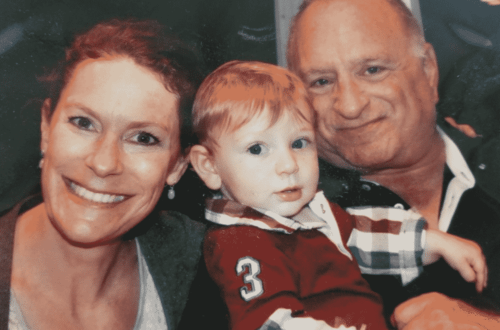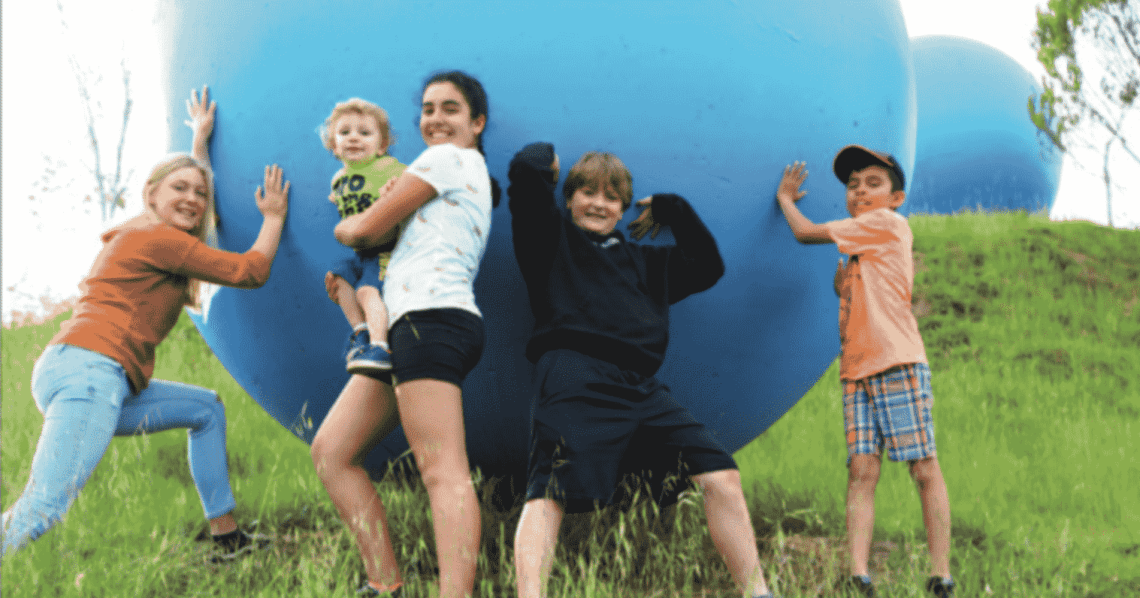
A Park by any Other Name
The Secrets of Anna Jean Cummings Park
By Ann Carin Niland
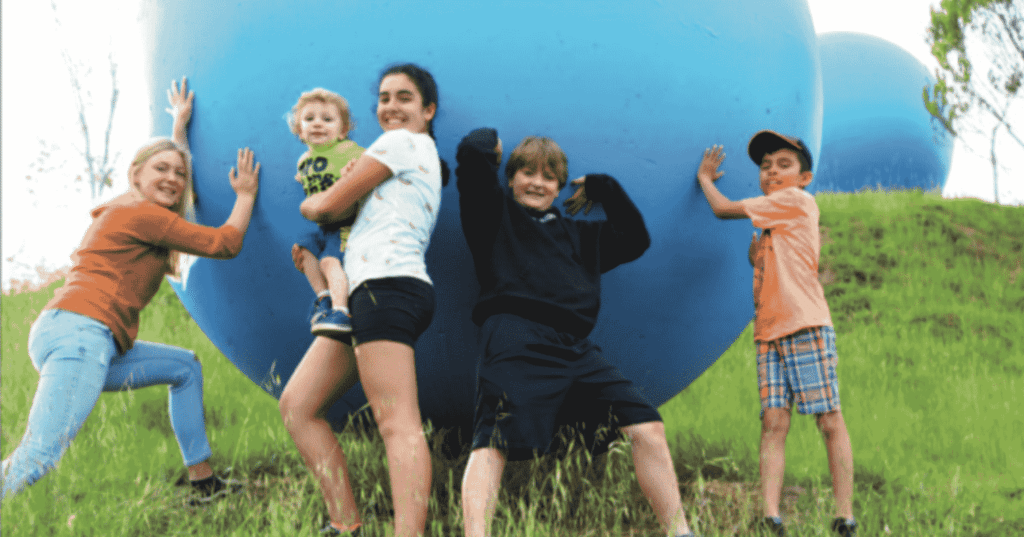
The Anna Jean Cummings Park is one of the most recognizable in Santa Cruz County, but some don’t even know its real name, still more people don’t know about everything the park has to offer, and almost no one knows about some of the interesting things that have happened at the park known locally as Blue Ball Park. If you only drive by, you would never now that the park is 96.7 acres divided into three uses.
The Park’s Name
Anna Jean Cummings was the Founder and Executive Director of the Land Trust of Santa Cruz County. She was also a leading member of the Save Soquel group that advocated for the preservation and protection of the O’Neill Ranch for public use and the residents of Soquel. From purchasing the land to the grand opening of the Anna Jean Cummings Park, 20 years passed. Cummings died of cancer before she could see the completion of the park she worked so hard to create. To honor her hard work, the park was named after her.
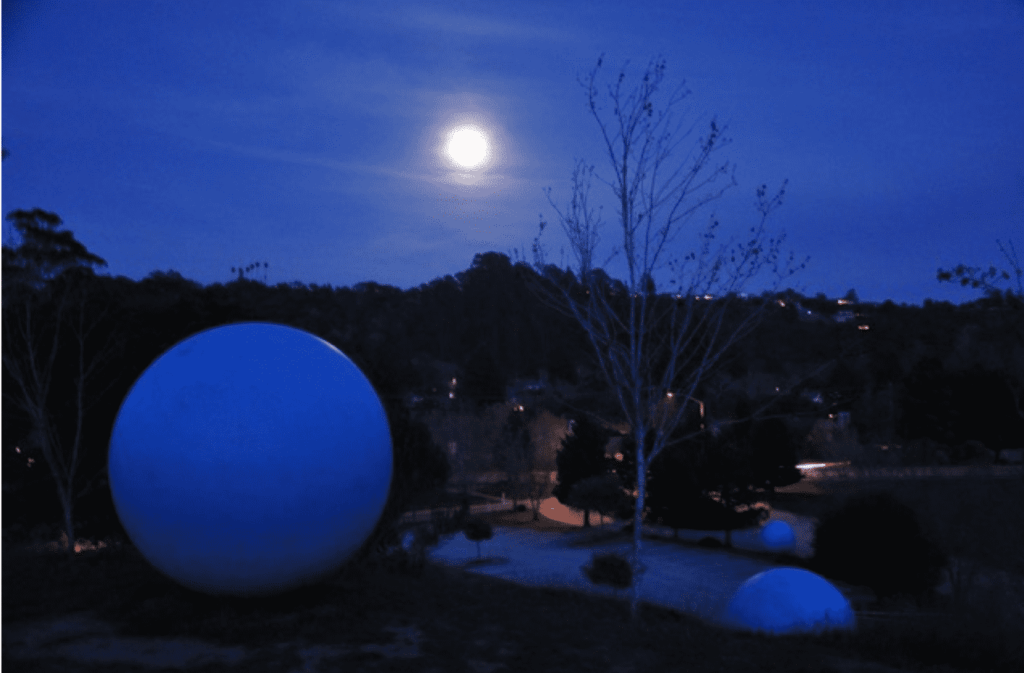
The lower level of the park that can be seen from the road provides a large playground that is split into two age groups so younger children can safely enjoy the structures without being underfoot of the faster moving older kids. There are also large covered pavilion spaces with multiple picnic tables for gathering, as well as smaller picnic tables, some of which are shaded and others let you sit in the sun. There is also a large grassy field that people use to play active games, lounge, fly kites and throw a Frisbee around. This field also provides the park with a buffer against the busy street which helps the park feel safe without having to put up fencing.
On the day I visited the park, for Danae Miller 31 and her son Brayden, 3 the field was the perfect place to shoot off a small air compression rocket. But the rocket was temporarily forgotten once he caught sight of the slide.
“Both my kids love the slides,” said Miller. She also has a daughter Reese, 5, and she has been bringing her children to the park for years and watching them grow to enjoy more of what the park has to offer.
The Slide
The slide has gone through three incarnations so far. A hillside slide is never something that rolls off an assembly line, it must be custom made to fit the landscape. The first was a single 5-foot-wide bright yellow fiberglass slide that moved people so fast it had to be closed a week after it opened.
“When you got to the bottom and you hit that curve, it semi-ejected you out into the sand,” said the Superintendent of the Parks Department Gretchen Iliff.
It also didn’t help that the bright yellow color left its mark on the back side of anyone brave enough to go down it.
“I was the first one down it,” said Iliff. “My butt was completely yellow from the paint on the fiberglass.”
After only one week all the yellow had been rubbed off the slide, and was no doubt destined for washing machines all over the county.
“The skateboarders loved it,” said Iliff. But a lot of safety regulations go into any park structure and after numerous complaints it was clear the first slide had to be replaced.
The second incarnation was plastic. Like the slide of today it had the little bumps that slowed riders as they went down. But after only a couple years the plastic was so warped it too needed to be replaced.
Thankfully, the Parks Department stuck with the idea of having a slide, and they installed the two metal slides that the park still has today. Metal is long lasting, but they quickly discovered the slides would get extremely hot, so the current large shade structure was added to protect riders from superheated metal.
Heart Attack Hill
The big hill that’s home to the slides has been nick named Heart Attack Hill. because as you climb the staircase that leads to the upper fields you might feel as if you’re going to be taking a trip to the hospital. It is thought that the hill used to be less steep before construction of Soquel Wish School. The contractors moved a lot of fill dirt into the space making the hill much steeper.
If you can brave the staircase you will find two large ball fields for softball, baseball and soccer, surrounded by a level walking path. Beyond the ball fields there is a large greenway with a looping trail that nature lovers use to enjoy light hiking, spring flowers and wildlife.
The Road to Recovery
If you’ve ever walked the track surrounding the ball fields, you might have missed the brick sized plaques nestled along the edge of the grass. The plaques display words of encouragement from young people that have struggled with addiction and have been successfully rehabilitated. In 2001, a group of parents approached the parks department in about installing The Road to Recovery. The young people that participated in the project wrote short poems or statements in an attempt to persuade other young people not to get involved with drugs or alcohol and to make healthier choices. The parent group raised all the funds necessary for the project.
If you can brave the staircase you will find two large ball fields for softball, baseball and soccer, surrounded by a level walking path. Beyond the ball fields there is a large greenway with a looping trail that nature lovers use to enjoy light hiking, spring flowers and wildlife.
Birds at the Park
Late one night, soon after the park’s grand opening, people living around the park called Iliff to tell her there was an owl stuck in the soccer net. She rushed to the park and called animal control.
“They asked ‘what kind of owl is it?’” recalled Iliff. “And I said ‘Well I don’t know. A really mad one.’”
When the park first opened the groundskeepers left the soccer nets up all night; now the nets are taken down every evening. Not only does the Parks Department want the owls to be safe, they need the owls’ help to keep the gopher population in check.
The superintendent might not have been able to identify the owl’s genus, but there are many people dedicated to the hobby of birding that might have. When they spot a bird they take photographs, log dates and locations. Along with a local favorite the Pygmy Nuthatch, there have been well over 100 birds identified at the park – not to mention three owls. The list of bird sightings can be found here: https://ebird.org/hotspot/L1805571
The Artists Behind the Sky Balls
Each ball is 6,000 pounds, nine feet in diameter, hollow, constructed out of rebar and cement and they all cost $50,000. “The Sky Balls as we try, and try, and try to call them are a focal point for the park,” said Iliff.
Soon after they were installed people started adding their own touches to the art. Someone, somehow, got one of the Green Waste recycling bins up on top of the highest sphere. A few members of the community have tried to add their art to the highest one by painting different things on it. On the list are a man’s genitals, the trucking thumb and the world. Iliff says that she was dismayed to have to paint over the world.
“It was cool. But that wasn’t the intent of the installation,” she said.
The Parks Department has a large bucket of blue paint and a brush ready and waiting for any such occasion.
“For some reason it’s always the top one,” said Iliff.
And it has been that way since the very first night the Sky Balls were installed when someone tried to break off the highest ball.
“Somebody thought it would be a good idea to roll one of those suckers down the hill,” said Steve Gillman, 72. Gillman and Katherine Keefer, 71, are the creators of the towering public art.
What we see today used to be eight individual half spheres. These massive objects had a very active life before coming to live on Heart Attack Hill. Hauled from the San Francisco Bay Area, dangled precariously from a crane, after carefully threading the pole through holes in each of the 3,000-pound half spheres was quite a project. The round molds weren’t perfectly round either and they needed to be aligned exactly right as well.
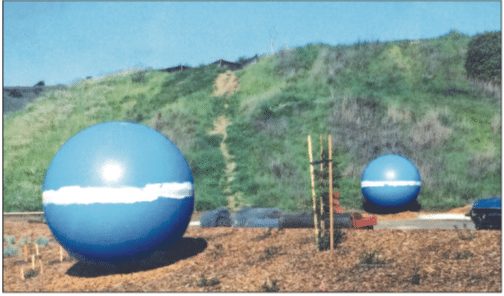
“It was a long process,” said Gillman.
The next day the artist came back for finishing touches.
“I remember coming back to paint them and someone–probably kids, had set up a fulcrum and a pry bar, and they had bent the pry bar,” said Gillman. “But of course they couldn’t move it because–I don’t even know what it would take to move it… more than a pry bar.”
Thankfully the stunt wasn’t successful.
“That was a tricky installation,” said Gillman.
“Steve is absolutely fabulous at figuring out how to do stuff,” said Keefer.
Gillman recalls the process of finding inspiration for the Sky Balls.
“Katherine had a bunch of these ceramic balls around another sculpture. They were glazed sky blue.” Gillman asked Keefer, “What are those little blue balls that you put around your sculptures?” Keefer responded “I don’t know. They’re sky balls” Gillman chuckled as he remembered envisioning them on the hill “Wouldn’t that be fanciful.”
“It is your vision, but it’s not about you,” says Keefer. “One thing I like about public art is that it’s big, and when you walk into it it’s visceral. Hopefully you’re going to become a part of that whole experience. It’s still a human scale, but it’s not. Your whole body is in relationship to it.”
When the art is right for the space Keefer says, “It energize, and calms, and informs an entire space.”
It is important to both artists that the work they do is in harmony with the landscape they are working with. The history of the space, the people that live near by, the way the space is used, and the budget are among the considerations.
“You can do anything you can think of if you can do it in a budget,” says Keefer “And that is really fun if you can find people that can do really high quality beautiful work that can make it come true.” Keefer enjoys working with everyone involved in the process. There are landscape architects, committee officials, and sometimes the public gets involved. But the most important part of the project is respecting the space.
“We both really like to work with the land,” said Keefer. “So that it fits into the place, and becomes part of the place. Sky Balls was successful that way.”
Says Gillman, “You follow where the sight suggests you go, and something happens. A kind of collaboration between the sight and the artist. Although usually the sight isn’t consciously aware of that, or maybe it is. Who knows? Who am I to say?”
“I learned a long time ago that if you try to please everybody you please nobody,” says Gillman.
“If people own it, if the neighborhood owns it and it becomes theirs then that is successful,” said Keefer


You May Also Like

Coping with First-Time Camp Experiences
April 25, 2018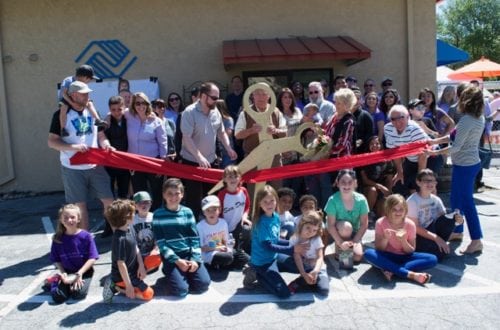
New Boys & Girls Clubhouse Opens
April 25, 2018